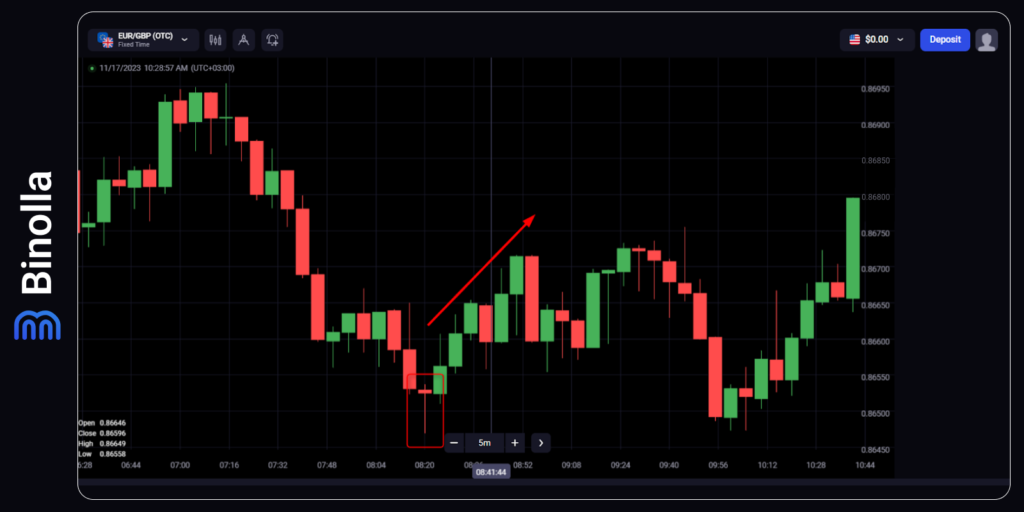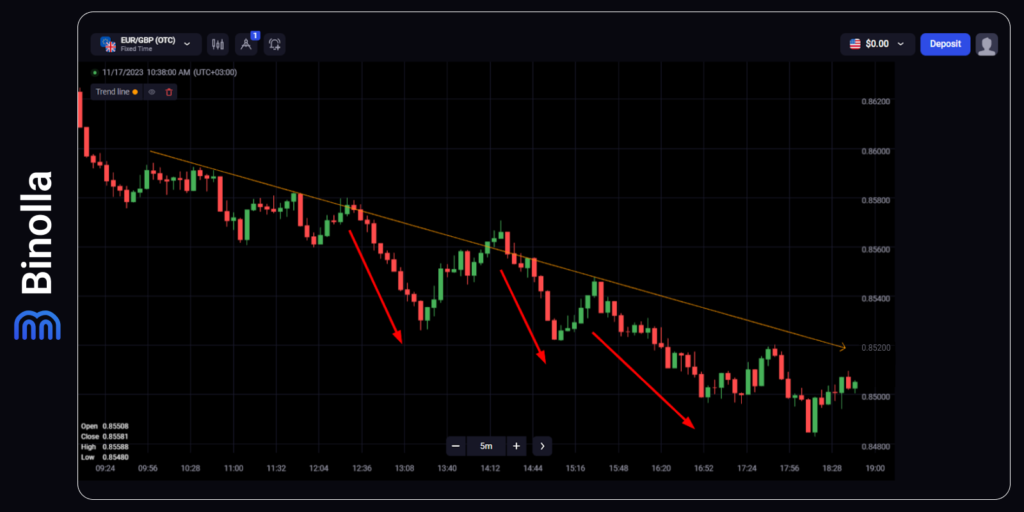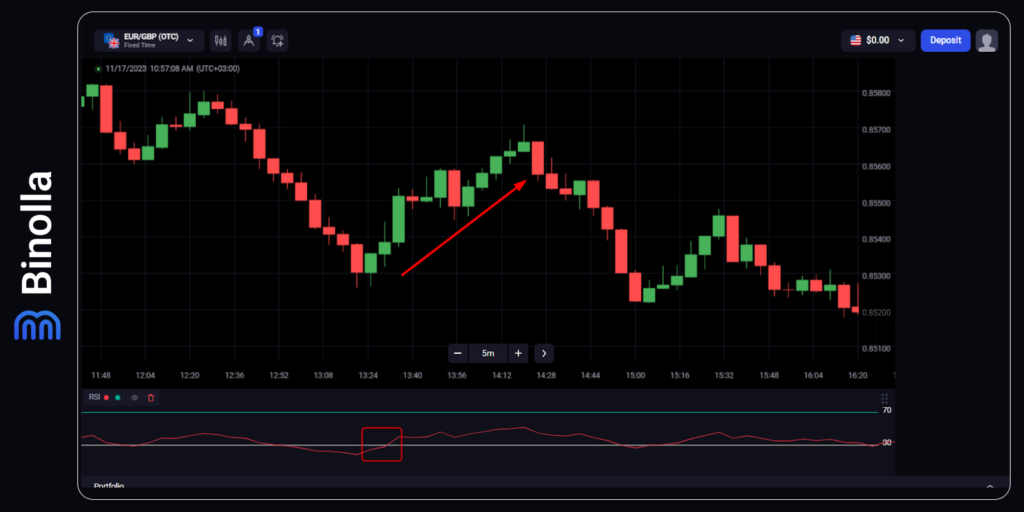Demo Trading Tips and Tricks

Training is what people always do before getting into something bigger. You do training before playing soccer or basketball, becoming a doctor or a lawyer. You need to be prepared for flying planes as well. Training is what helps you become a professional in every single niche you are going to delve into. Demo trading is a part of training that is very important for beginner traders. By reading this article, you will find out more about the mistakes that newcomers often make and how to avoid them. We will provide you with information about how to squeeze the most from your demo account journey. Start using the demo account on the Binolla platform.
Why Demo Trading Accounts Are Important
The demo account is very important for both digital options and Forex/stock traders. Beginners can train their initial trading skills while professionals work on their strategies without putting their money at risk. The reasons for trying the demo are the following:
- Risk-free trading. When using demo accounts, you don’t put your money at risk. Whether you are getting familiar with the platform, taking your first steps in trading, or elaborating on your strategies, with the demo mode, you can do it freely and without any risks of losing real money;
- Real market trading conditions. When using the demo account, you will have access to real prices. You can compare it by switching to the real-money mode. This means that for each trade you open, all the prices are true;
- Refine your skills and get more experience. Traders who use demo accounts can refine their trading skills and test various strategies;
- Find out more about financial markets. When using a demo account, you can discover various parts of financial markets without putting your own funds at risk. In particular, you can explore different assets, types of contracts, and price movements and even see how economics impact price fluctuations;
- Build confidence. When trading on a demo account, traders can get experience and develop their own skills before they start putting their own money at risk.
Thus, the importance of demo accounts is hard to overestimate. Whether you are going to trade digital options, Forex currencies, stocks, commodities, or indices, you can always do some preparatory work and spend some time buying and selling contracts/assets with virtual money. Moreover, even after you switch to a real account, you can go back to the demo from time to time to work on your strategies in a risk-free environment.
The Worst Mistakes Traders Make When They Trade on the Demo

While demo trading may be very useful and helpful, some traders make mistakes that have hard consequences. By reading the following lines, you will find out more about such mistakes and how to avoid them.
Considering Demo Trading as a Game
One of the biggest mistakes that most novice traders make is that they consider demo trading to be a kind of game. They do not treat risks properly and sometimes open aggressive positions in order to gain more virtual money. They try to set records instead of working on their money and risk management.
The thing is that this may work on the demo, but once you switch to the real money account, this approach may ruin your trading balance in the future. While it may be tempting to earn as much virtual money as possible, this approach may also lead to overconfidence and a false perception of risks.
Binolla Recommendations on How to Treat the Demo Account Properly
First, you should think about the demo as if it were your real money account. To do that, you can set a balance that is equal to or close to the one you are going to use when switching to your main trading account. This will help you understand how much to put at risk in each trade and what risks you can take.
Do not try to set records in the demo account, as that is not the case. The idea of trading is to earn money, not to impress yourself or the people around you. Thus, whether you buy a digital options contract, a Forex currency pair, or a stock, you should keep it real and not cross the borders of your strategy and trading system.
When trading on the demo account, try to analyze your performance. This is a great opportunity to see what you can and shouldn’t do in trading. By getting more information about your true trading performance, you can apply proper planning to your trading routine.
In general, think about the demo account as if it were your real money account. Stick to your strategies and trading plans, conduct proper money and risk management, and use this time with the maximum benefit.
Setting Unrealistic Goals
People always dream about something. Traders think about their profits and how they are going to change their financial situation. Beginner traders often overestimate their own capabilities and set unrealistic goals. That’s what you should avoid at any cost and by any means. When trading on a demo account, you should always keep it real. Setting unrealistic goals when trading on the demo will lead to huge mistakes in the future.
Some Useful Recommendations from Binolla
To avoid this mistake, you should define your trading goals properly. When stepping into trading with $100 on your balance, you are unlikely to make even $1,000 in one single month. The main goal for all traders at this stage is to learn how to make steady profits over time.
Instead of thinking about making millions in a relatively short period of time, you should cut your dream into smaller pieces and set intermediate goals that will be easier to achieve. If you start with $100, for instance, you can make 20-30% of your balance within one week. Try to do it in the demo mode, and if it is ok for you, you can go further and raise the bar.
The demo account may also teach you patience, which is the key to trading in whatever aspect you take. Don’t try to make all the money in a single week. Be patient about reaching your goals instead. Treat your mistakes when trading on the demo account as part of a job and make them work for you. Adjust your goals according to your performance.
Overtrading is What Ruins Trading Balances

Another bad mistake that many novice traders make even after they switch to real money accounts is overtrading. While you should use this training in the most effective way and open as many trades as possible to get used to this profession as well as to work out your strategy, you should keep in mind that once you start trading for real money, you will have to decide when to buy/sell assets and when to stay away from trading.
Overtrading has a lot of bad consequences that will negatively impact your trading results. To avoid them, you can use the following recommendations.
Stick to Your Trading Plan and Risk Management Strategy
Setting a trading plan is a good idea, as it will provide you with strict rules about your entry and exit points, stop losses (for FX and stock traders), as well as set the goals for each particular trade. A trading plan will minimize the risks of overtrading, and you should work on it during the demo period and learn how to stay the course.
Another recommendation that you can take from this article is to use proper risk management strategies during the demo trading period. This is the best time to learn how to properly calculate your risks and adjust your trading positions accordingly.
You should take breaks from trading from time to time and learn how to do it when you are using the demo account. Even if you are trading on the demo and you see that your decisions are impulsive and emotional, make a pause.
Ignoring News and Events
Even if you are going to use pure technical analysis and your strategy is based on candlestick patterns or technical indicators, you still need to go outside the charts and look at what’s going on in the fundamental landscape. News and events may have a significant impact on prices and even break patterns. Thus, it is recommended to trade in compliance with market news and check the economic calendar to find game-changing data releases.
Staying on the Demo Account for Too Long

This is the problem that many traders face when they trade on the demo account. They don’t know when to stop and switch to real money trading. This may lead to some bad consequences that are listed below:
- Traders may become complacent. When trading on the demo account for too long, traders may become lazy and lose interest in what they are doing. They do not make serious decisions and may think that trading is a simple way to make money;
- Traders may lose motivation. Trading is about making money. As long as you remember this, you are motivated. By trading on the demo account for too long, you lose this scope as you are not rewarded with real money after you close your demo trades;
- Market conditions may change. The market is constantly changing and what works today may not work in the future;
- Missed opportunities. As long as you trade on the demo account, you don’t make money. All the time that you place a profitable trade, you don’t change your financial situation at all, as you are rewarded with virtual funds only.
When to Leave Demo?
The answer is simple: once you are ready. You don’t need to wait for this moment for months, especially if you have a strategy and have tested it under different market conditions. Don’t leave the demo account right after a single profitable trade, even if you manage to make huge profits. However, if you see that your trading system is good enough and its performance confluences with your expectations, then you can switch to the real money account.
Not Accepting Losses is a Big Mistake
When trading on the financial markets, be it digital options, Forex, or stocks, you should accept losses that are an integral part of such activities. Whatever strategy you use, losses are inevitable. Your main task in trading is to keep them low, which will allow you to grow profits over time.
A lot of traders do not accept losses when they are trading on demo accounts, and they even avoid thinking about their mistakes before they are hit by the truth when they lose real money. The main thing that you should learn when trading on the demo is that your percentage of successful trades should be higher as compared to your percentage of losses.
As an example, we can consider the situation when you have opened 20 digital option trades per month with $10 each (with 90% profitability each). Assume that you had 5 losses and 15 profitable deals. This means that from $200 spent on trading within a month, you have lost $50 but managed to make $135. In addition, each time you close a profitable trade, you have your investment amount back, which means that your total balance after a month of trading will be $135 + $150 = $285. Taking into consideration that you have invested $200 in total, your net revenue is $85, which is equal to a 42.5% yield.
Trading Strategies to Work on During the Demo Training Period
If you are a totally new trader, then you may need some basic strategies to work with when trading on demo. We are going to provide you with some interesting options that you may apply both during your training and trading periods.
Hammer Pattern Strategy

The hammer pattern is one of the most popular and frequent formations that you can find on charts. The idea behind it is very simple. When you see this pattern on charts, you can expect the price to reverse from a downtrend to an uptrend.
The pattern should have a long tail from below and a very small body that should be as close to the upper part of the candlestick as possible. The color of the formation doesn’t matter.
Digital options traders can buy a Higher contract in this case, while Forex or stock traders buy currency pairs/stocks.
Trendline Trading Strategy

This one is quite a simple strategy where you need to build a trendline and then use it to find entry points. The idea here is also straightforward. Once the price bounces off the descending trendline (in this particular case), you can buy a Lower contract or sell a currency pair/stock.
A Simple Strategy with an RSI Indicator

The next one is suitable for traders who are going to use technical indicators in their trading routine. RSI stands for Related Strength Index, which is, simply put, a technical indicator that shows market reversals by defining overbought and oversold areas as well as the relative strength of both bulls and bears.
The example above demonstrates how to use this indicator when it is oversold. A line below 30 is a good opportunity for a trader to plan their next moves. You should wait until it crosses the horizontal line and leaves the oversold area to buy a Higher contract or a Forex currency pair/stock.
Demo Trading Key Takeways
Demo trading is the practice of using a simulated account to trade the financial markets without risking real money. It can be a useful way to learn the basics of trading, test new strategies, and develop confidence. Here are 10 key takeaways from demo trading:
- Demo trading can help you familiarize yourself with the trading platform, tools, and features that you will use in real trading.
- It allows you to understand market dynamics, such as price movements, trends, volatility, and liquidity.
- Virtual account trading can be helpful in developing a trading plan, which is a set of rules and guidelines that define your trading goals, risk management, and entry and exit criteria.
- Demo trading is the key to testing and refining your trading strategies, which are the methods and techniques that you use to analyze the market and execute trades.
- This type of trading can help you practice your trading psychology, which is the emotional and mental aspect of trading that can affect your performance and decision-making.
- Demo trading can help you measure your trading performance, such as your win rate, risk-reward ratio, drawdown, and profitability.
- You can identify your strengths and weaknesses as a trader, and work on improving them.
- Demo trading prepares you for real trading, but it cannot fully replicate the real market conditions and challenges that you will face.
- Demo trading can have some limitations and drawbacks, such as a lack of emotional involvement, feedback, and accountability that can affect your learning and motivation.
- Demo trading should be treated as a learning tool, not as a game or a substitute for real trading. You should have realistic expectations and goals, and transition to real trading when you are ready.
FAQ

What are the benefits of demo trading?
Demo trading can help you gain confidence, improve your trading psychology, and develop your risk management skills. You can also experiment with different markets, instruments, time frames, and indicators without losing any money.
What are the limitations of demo trading?
Demo trading cannot replicate real market conditions, such as liquidity, slippage, commissions, and spreads. You may also experience emotional differences when you switch from demo to live trading, as you will have more attachment to your real money than to your virtual funds.
How long should I use demo trading?
There is no definitive answer to this question, as it depends on your personal goals, preferences, and learning curve. Some traders may use demo trading for a few weeks or months, while others may use it for years. The key is to use demo trading as a tool to enhance your live trading performance, not as a substitute for it.
What is the difference between a demo and a real-money account?
The only difference between them is when trading on a demo, you don’t risk your money. When it comes to the rest, they are similar.






